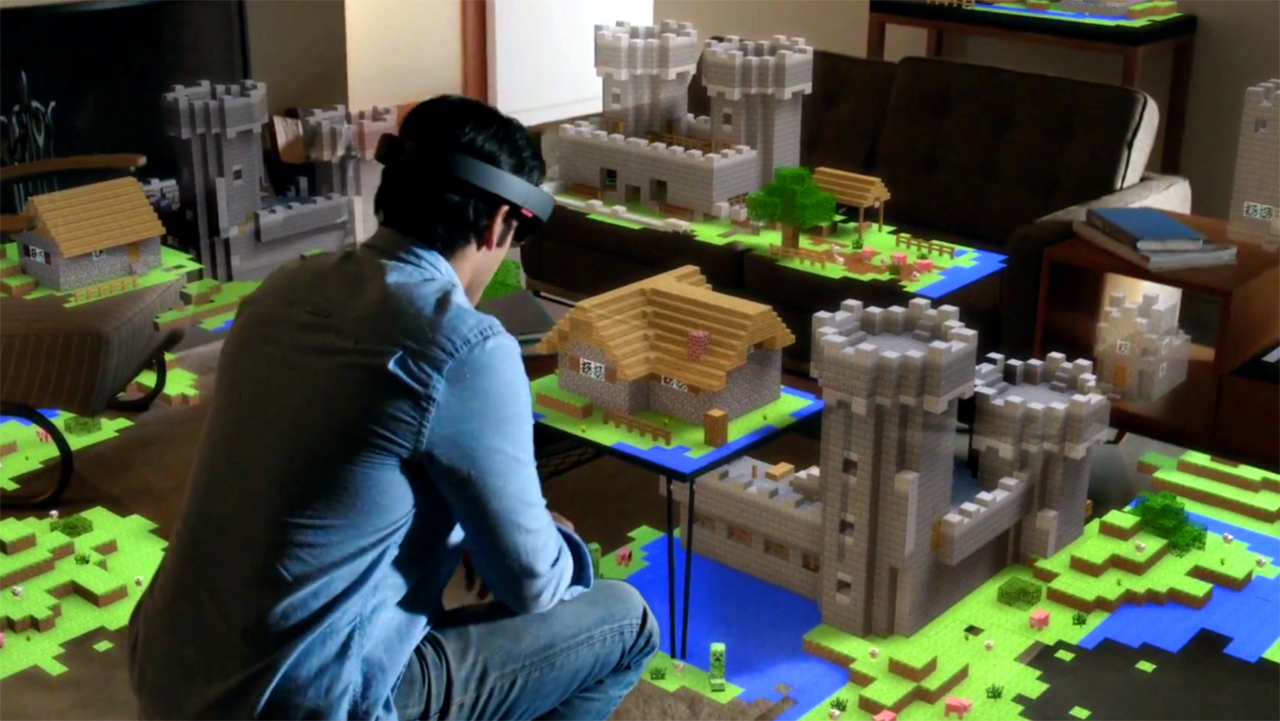Microsoft has been building a reputation for being just a little bit cooler than AOL. Today, it announced something that actually seems like it could have a huge impact on the our lives: “Windows Holographic,” Microsoft’s bid at joining the coming virtual reality wars. This actually goes further than affordable headsets like the Oculus Rift, in that it’s all about hologram technology and augmented reality. Plus, everything is built-in and untethered, meaning you can walk around wearing it and looking like a complete idiot and waving your hands in the air controlling interfaces.
From a promotional video that you can see embedded above, Microsoft has some very ambitious plans for the device. You’ll be able to design objects by sculpting in space and then 3D-print them. You’ll be able to have screens on screens on screens. Screens everywhere! You’ll be controlling everything with hand motions in the air. Your living room will be giant Minecraft playset. NASA will be piloting the Mars Rover with it. (Actually that one is already happening.)
In fact, all of this could be happening fairly quickly. Microsoft simultaneously announced that Windows 10 will be a free upgrade and that Windows Holographic will be available sometime within that operating system’s life cycle. Meaning that we could see these things on the market within a year or two.
With today’s announcement, Microsoft is now one step ahead of Google’s Magic Leap. That mysterious company has been the subject of intense speculation, but from the patents that have been filed, it seems like basically the same thing — holographic virtual reality. The Microsoft concept video doesn’t show much involving interface designs and Magic Leap seems to be very focused on them (see below). But it does have an actual product that’s being tested, with a release time frame and a slick video while all we have from Magic Leap is some clip art.

Wired tested the Windows Holographic out and they were generally impressed. Though the tester claimed it had a long way to go, they said the demos worked flawlessly. The biggest hurdle will be getting developers to jump on and take advantage of the hardware. The company says encouraging developers to get back in the Windows is exactly why they’re releasing the new operating system for free.
(Photo: Microsoft)


